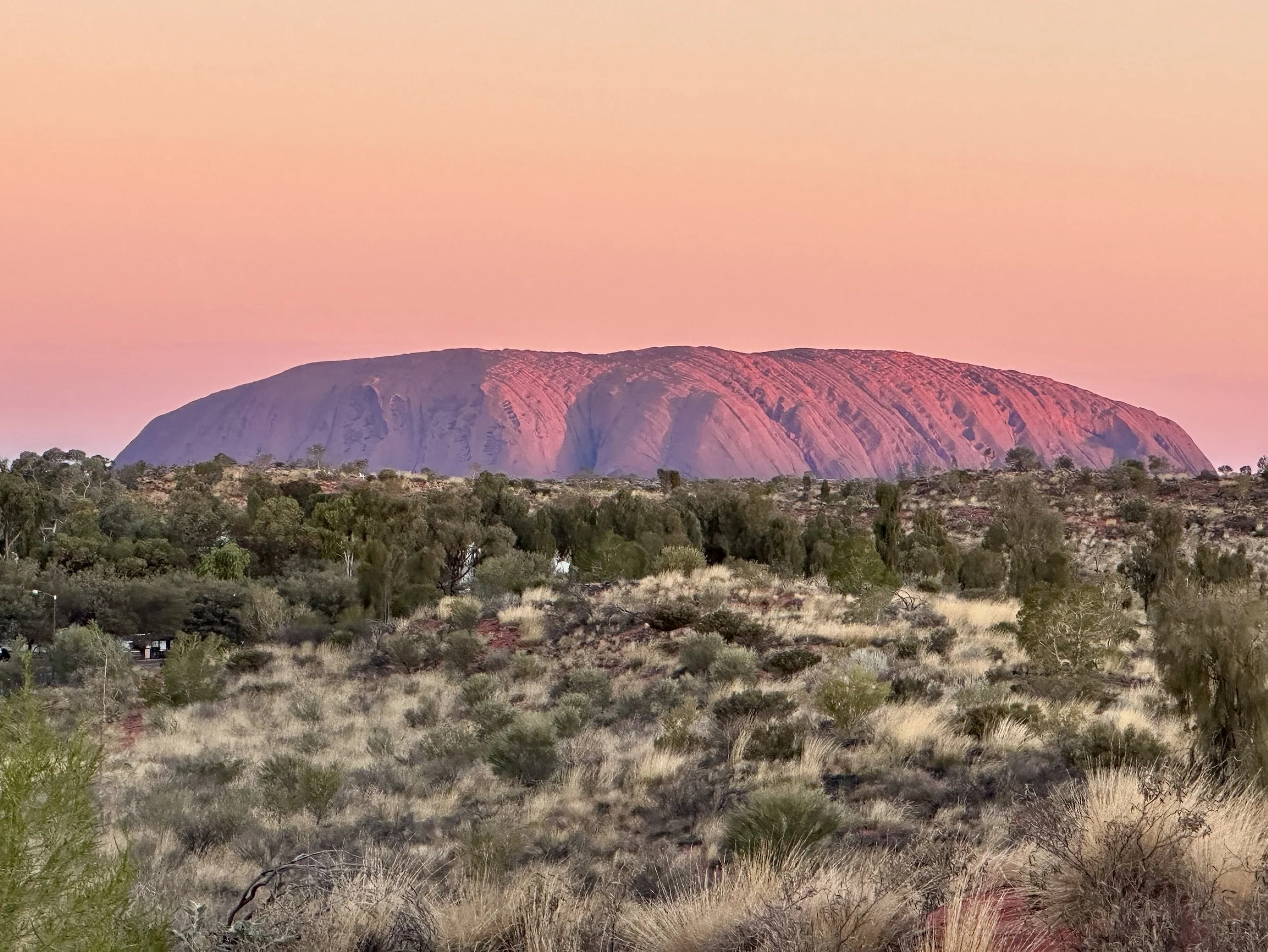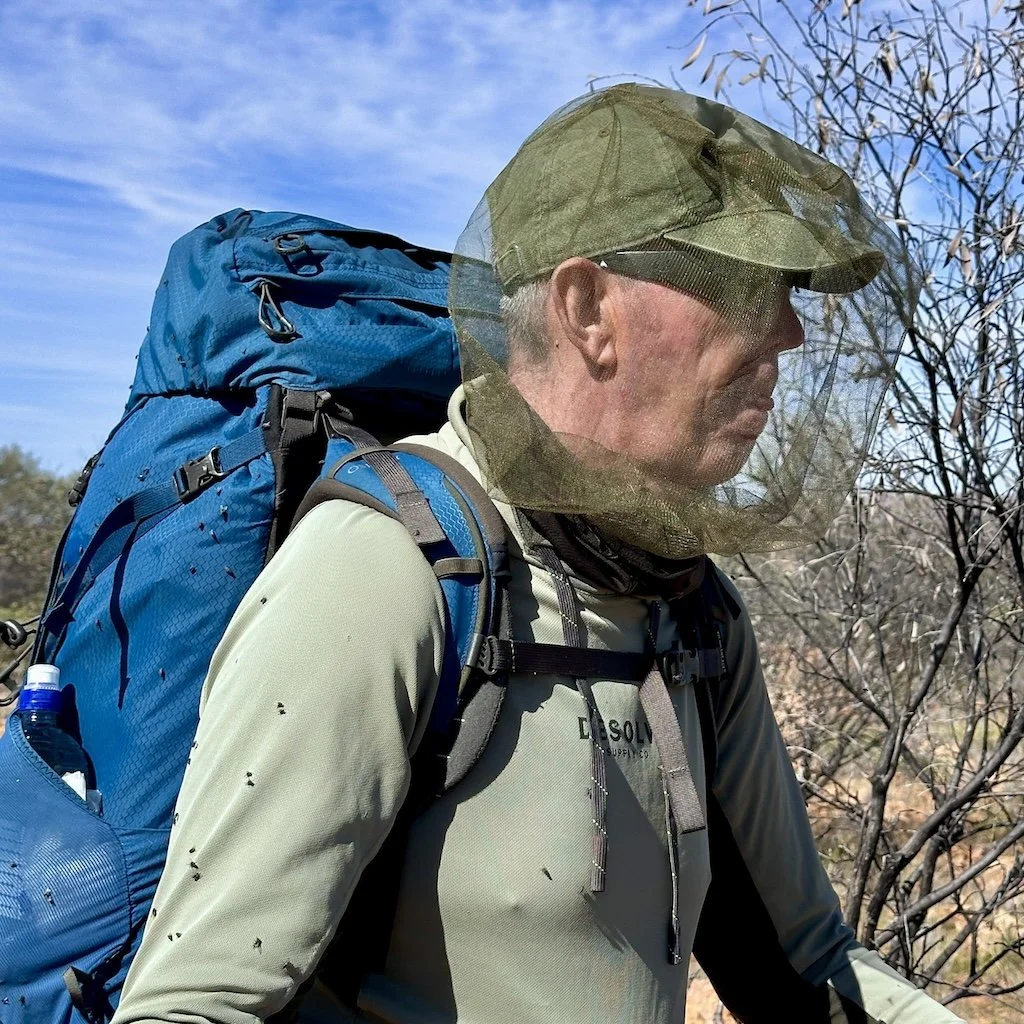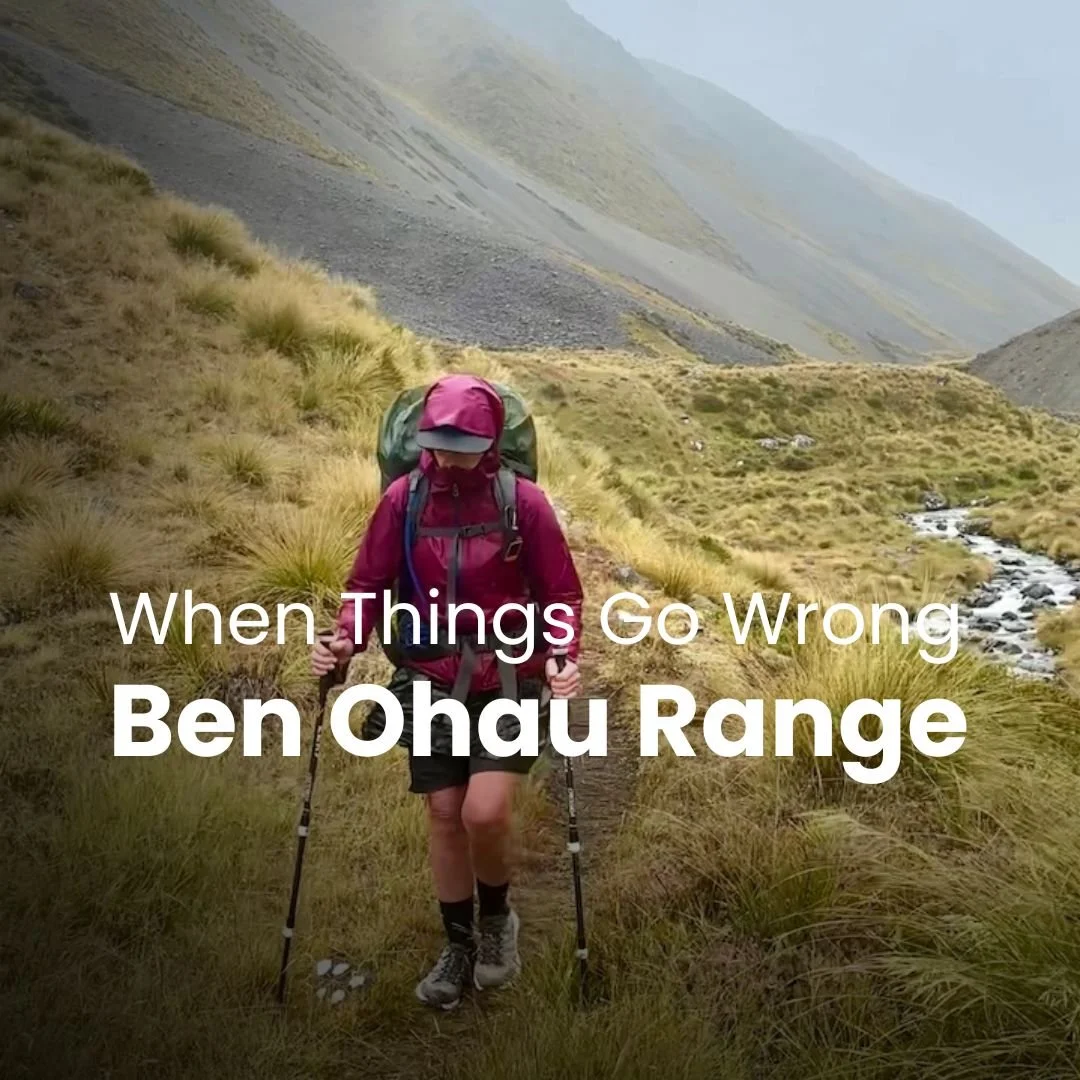Winter in the Red Centre
Winter in the Red Centre of Australia
Winter in the Red Centre of Australia is magical. Imagine clear dry days under an enormous blue sky, pleasant daytime temperatures and last but not least, fewer flies when compared to the hot and wet summer months.
While it’s possible to visit the region in any season, winter’s cool drier days provide the ideal conditions to explore the Red Centre’s iconic landscapes.
-
-
If you’re planning to travel to the Australian Outback or more specifically, the Red Centre and want to get the most benefit from this article, use the Contents List above to quickly navigate your way between sections. Once you’ve opened the Contents List, click any of the bullet points to jump straight to that topic.
Throughout the article, I’ve linked to further reading, products, services and directly to the daily blog or vlog relevant to that paragraph.
Where it helps to add further context, I’ve included videos from the relevant day. As well, click any of the images as they will also take you directly to the relevant day.
During June, we spent three weeks in the Outback and combined hiking the 260 kilometre Larapinta Trail with embarking on a massive road trip to visit the King's Canyon, Uluru and Kata Tjuta. Taking part in various outdoor actives such as hiking is what brings many visitors to the area.
While on trail not only were we spending our days outside, we camped every night which gave us a physical connection to the land and appreciation of winter in the Outback. Having just flown in directly from New Zealand’s wet winter, the warm dry days and crisp clear nights were a delight.
Winter’s Passage in the Outback of Australia
The months of April and May brings winter’s chill back to the region. As the temperatures begin to drop, the landscape takes on a quieter, more subdued tone.
The crisp air and overcast skies at this time signal a seasonal shift which prompts the snakes, lizards and other reptiles to retreat into hibernation. While I’d love to see more reptiles in situ, I’m not comfortable with coming face to face with a snake, poisonous or not.
Late May to July marks the arrival of the really cold weather and each morning the ground is blanketed with frost creating a crisp and refreshing atmosphere.
As the season progresses through August and September, the gentle yet consistent winds blow in from the north and west, heralding the arrival of warmer days.
With the temperatures rising, the reptiles once again awaken from their winter slumber, bringing new life to the landscape.
Winter Temperatures
From May to September, daytime temperatures generally range from a pleasant 20°C to 30°C though prepare for cold nights, particularly if you’re like us and are camping. One benefit of the cooler nights when compared to the summer humidity is that you can actually sleep.
Our first few days hiking the Larapinta Trail were very warm with temperatures in the high 20’s. While that’s not extraordinarily hot, when carrying a heavy backpack and climbing up the 1209 metre high Brinkley Bluff, we certainly felt it.
I noted that the National Park signs emphasised the need to carry plenty of walking while out hiking and for good reason. As well, the signs in the public toilets displayed in graphic colour the stages of dehydration and what to look out for.
Get Your Trail Ready Meals Now
When heading out on trail I always make sure to take my favourite trail food - especially for those extra big days!
Meals can be ordered online and then sent on directly to your resupply point saving you time and money.
Radix Nutrition meals are designed to provide the nutrients you need to perform and thrive.
Learn more here and use my code FREEWHEELINGKIWI15 for 15% off!
Go Exploring
Winter’s mild daytime temperatures make it perfect for outdoor activities like hiking the Larapinta Trail, walking the Uluru Base Track, the King's Canyon Rim Walk or delving amongst the Kata Tjuta domes.
Besides hiking, there’s many mountain bike trails and at Uluru for example, while we walked the base track, other people chose to hire E-bikes or Segways. We were glad we’d made an early start before too many of these vehicles were on the trail as some of the riders were less than competent.
All of these walks are spectacular and the comparatively mild temperatures make it far more comfortable when compared to other seasons.
I was interested to see safety notices at the King's Canyon advising prospective hikers to start prior to 10am if the forecast temperature was likely to reach 36°C or above. In such a barren and rocky landscape I’d imagine the combination of heat from above bouncing back up off the rock and canyon walls to be intense.
The temperatures were far milder the day we completed the King’s Canyon Rim Walk and we were able to take our time and enjoy the experience.
Even with the milder temperatures, you’ll need to carry your own water on these walks as there’s none available.
While we found the weather in June to be ideal, we could be tempted to return in the "wet" season though not to hike over multiple days due to the increased risk of flooding.
What we’d like to experience is the rain pouring down off Uluru which given the sheer walls of the rock, must be phenomenal.
Epic Sunrises and Sunsets
The winter months offer the best conditions for viewing the spectacular sunrises and sunsets over Uluru and Kata Tjuta in the Uluru-Kata Tjuta National Park and the King's Canyon, Watarrka National Park.
Alternatively, if you’re hiking the Larapinta Trail in the Tjoritja / West McDonnell National Park, you’ll have endless opportunities to enjoy the sunrises and sunsets from your tent site.
While winter hiking in the Outback of Australia we set our alarm each morning for 5.30am allowing us to be on trail as the sun rose. We found this to be a magical time to be hiking as not only did we enjoy each distinctive sunrise, we were out well ahead of the heat of the day.
We then had the option to take a long lunch break during the hottest part of the day before continuing once more as the temperatures dropped. We managed our timing in order to arrive at the next campsite around an hour before sunset which was plenty of time to set up camp and cook dinner ahead of relaxing back to enjoy the views.
For reference, in mid June, the sun was rising at about 7:15am and setting at 5:55pm.
Star Gazing
Due to the dry conditions winter nights offer huge clear skies and endless opportunities for stargazing. Once you’re away from Alice Springs, there’s no light pollution to interfere with your experience.
With the winter sun setting early, it’s not long before all heads are turned skyward to enjoy the night show and attention is given to identifying what’s above. Central Australia has some of the darkest skies and brightest stars on earth.
When on trail and having to get up during the night for the toilet, if the moon was out, it would cast shadows across the landscape.
Again for reference, in mid June the moon rise was at around 9:30pm and the moon set was at 10:23am.
Fewer Flies
The summer months in the Outback are notorious for a high prevalence of flies which can be more than a little annoying.
Although we visited in winter, we still experienced some flies however we found that when we walked at a good pace they weren’t such a bother.
When we stopped moving, for instance to have lunch, they rapidly returned with a vengeance. The flies are looking for moisture and aim for your eyes, nose and mouth and as someone who wears glasses, I’d find them difficult to brush away, caught as they were behind the frames.
Fortunately we’d been forewarned and had fly nets which at only NZD $3.50 was some of the best money we’ve ever spent.
As the days went on, we became more proficient at eating lunch while wearing the fly net though more than once, I still tried to eat directly through it rather than first lifting it!
As the temperatures dropped each night at around 5pm the flies disappeared only to return at 10am the following morning as the sun once more rose higher. This made eating dinner and breakfast much easier as those meals were enjoyed once the flies had clocked off.
If I’d been carrying a thermometer, I might have established the optimum fly (and no fly) temperatures which would undoubtedly be useful for future trips 🪰🪰🪰
Important Considerations for Winter Travel in Australia’s Red Centre
Cold Nights
While the days are pleasant, nights and early mornings can be surprisingly cold with temperatures sometimes dropping below freezing. Pack many warm layers so you can stay comfortable as the cool night air settles in. Even if you’re not camping, you’ll likely spend time outside to enjoy the sunset or sunrise.
We camped every night while hiking the Larapinta Trail and I found it necessary to sleep in thermals as well as many top layers to stay comfortable. Andrew on the other hand was more than comfortable with fewer layers and slept soundly despite the cold.
We’re all different and it’s important to know what is best for you preferably before you go camping. My sleeping bag has a comfort rating of -10°C and I kept it tightly zipped up while Andrew was using his hiking quilt, casually draped across his body.
As a benchmark, while we were on the Larapinta Trail, the daily temperatures ranged from about 2°C to 26°C which is a significant daily shift in temperature.
Busiest Season
Due to the favourable weather, winter is also the busiest season in the Red Centre, especially during the Australian school holidays.
Do your research thoroughly as the school holiday dates vary from state to state so while it may not be the school holidays in the Northern Territory, expect to see families from interstate. The Northern Territory neighbours Queensland, Western Australia and South Australia.
When we camped at the King's Canyon Resort, we had the pleasure of watching 260 very energetic teenagers set up their tents on the adjacent site. They were all taking part in school holiday programmes and I could only imagine the long days for the teachers and parent helpers. With apprehension I listened as their group leader briefed them that the following morning would start with a "5, 6, 7" interpreted as up at 5am, breakfast at 6am and on the bus by 7am.
True to the group leader’s advice, we were woken at 5am to the excited rabble of so many teenagers, obviously it was time for us all to wake up.
We had the last laugh a few hours later as we passed them huffing and puffing their way up the steep incline which heralds the start of the King's Canyon Rim Walk. Perhaps chatting in their tents half the night wasn’t the ideal preparation for a day’s hike.
We were delighted to run into some of the Freewheeling Kiwi community while on the King’s Canyon Rim Walk, by chance their guide had asked me to take a group photo for them and so there were plenty of laughs when they recognised me!
Final Thoughts on Winter in the Red Centre
I’ve now visited Australia’s Red Centre on two separate occasions and have found the climate to be more than comfortable albeit cold at night when camping. In both instances I visited in June therefore I’ve no personal comparison to make with another season.
Although it’s the busiest season for visitors, this is a huge country and crowded is a relative term. At any rate, while there’s plenty of people at the main tourist attractions such as Uluru, King’s Canyon and Kata Tjuta, you don’t have to wander far to find yourself alone to enjoy this remarkable landscape.
Sit quietly and wait for the magic to unfold, in the end, I’m sure you’ll be as enchanted as we were.
I’d love to hear from you, have you had to deal with pesky flies or other uninvited guests while out hiking? Share in the comments box below what’s been the most challenging insect invasion for you 🪰 🦟 🐝
Ready for more? Watch the daily vlogs below
“The real voyage of discovery consists not of seeking new landscapes, but in having new eyes”














For our tiny, off-grid cabin in New Zealand, finding the right location to start building was paramount and as someone who feels the cold, maximising sunlight was a top priority.
Over the past year while camped out in our tent, we’ve carefully observed how the sun moves across our property "Shambhala" throughout the seasons and in that time, we’ve learnt a great deal.